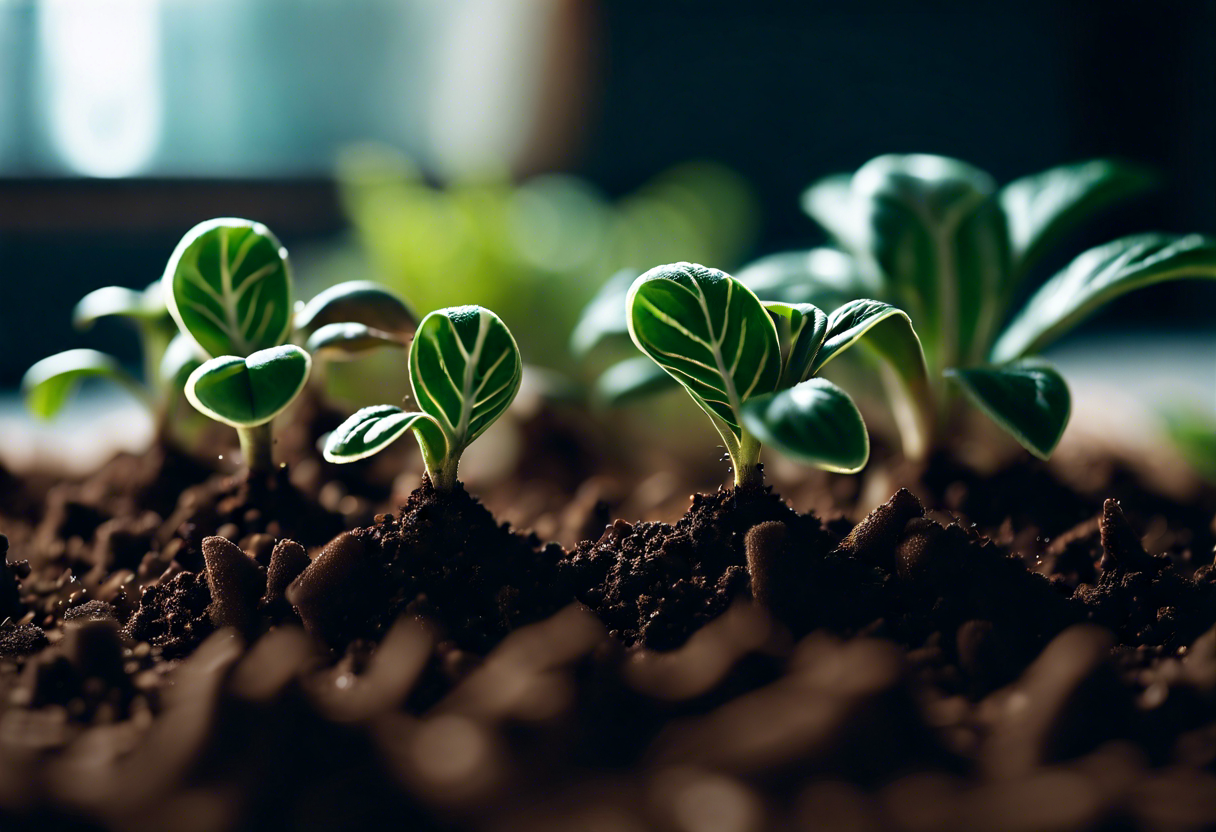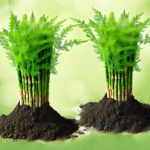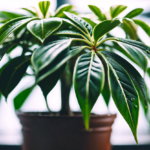Water Retention in Houseplant Soil
Causes of Water Retention in Houseplant Soil
Houseplants thrive when their soil provides a balanced environment for roots to absorb water and nutrients. However, excessive water retention in the soil can impede this process and lead to a variety of problems for your houseplants. Understanding the causes behind water retention is crucial for maintaining the health of your plants.
One common cause of water retention in houseplant soil is inadequate drainage. If the soil does not allow excess water to flow out, it accumulates and saturates the root zone. This can happen if the potting mix is compacted or contains a high amount of fine particles such as clay. These particles tend to absorb and hold onto water, preventing it from draining away.
Another factor that contributes to water retention is overwatering. Many plant enthusiasts have the misconception that watering their plants frequently is beneficial. However, overwatering can lead to waterlogged soil, which in turn hampers the plant’s ability to take up water. It is important to understand the specific watering needs of each houseplant species to avoid overwatering and consequent water retention.
Furthermore, the type of pot used can affect water retention. Plastic pots, for example, tend to hold moisture for longer periods compared to clay or terracotta pots, which have more porous walls and allow for better air circulation. The choice of pot material can significantly impact the water retention capacity of the soil.
Additionally, the composition of the potting mix plays a crucial role in water retention. Soil mixes that contain a high proportion of organic matter, such as peat moss or coir, retain water more readily. While organic matter is essential for providing nutrients to plants, excessive amounts can lead to the retention of too much water in the soil. materials like perlite or vermiculite can improve drainage and help reduce water retention.
Environmental factors like humidity levels and temperature can also influence water retention in houseplant soil. High humidity levels slow down the rate of evaporation, contributing to increased water retention. Similarly, cold temperatures can reduce plant metabolism, causing slower water uptake by the roots and subsequent water accumulation in the soil.
Several factors contribute to water retention in houseplant soil. Understanding these causes, such as inadequate drainage, overwatering, pot material, potting mix composition, and environmental factors, is essential for preventing waterlogged soil and ensuring the health and vitality of your houseplants. By implementing effective watering practices and selecting the right soil and pots, you can maintain optimal moisture levels in the soil for your houseplants to thrive.
Signs and Symptoms of Overwatering in Houseplants
Identifying Signs and Symptoms of Overwatering in Houseplants
Overwatering is one of the most common mistakes that plant owners make when caring for their houseplants. Although it may seem counterintuitive, giving too much water to your plants can actually be detrimental to their health. Understanding the signs and symptoms of overwatering is crucial in maintaining the well-being of your houseplants.
One of the first indicators that your houseplant is being overwatered is the presence of yellowing leaves. Overwatering can lead to root rot, where the roots become saturated and deprived of oxygen. This inability to absorb proper nutrients and oxygen causes the leaves to turn yellow and eventually wilt. If the problem persists, the leaves may even fall off completely.
Another telltale sign of overwatering in houseplants is the presence of mold or fungus growth. Excessive moisture creates a perfect environment for these unwanted organisms to thrive. If you notice any fuzzy or slimy patches on the soil surface or around the base of the plant, it is a clear indication of overwatering. Mold and fungus growth not only affect the plant’s health but can also pose risks to human health, particularly for individuals with allergies or compromised immune systems.
Roots play a vital role in the overall health of a houseplant. When overwatering occurs, the roots become waterlogged, causing them to become weak and mushy. A healthy root system should be firm, white, and have a slight resistance when gently tugged. However, if you notice roots that are discolored, mushy, or emit a foul odor, it is a sign of overwatering. These damaged roots are unable to effectively absorb water and nutrients, leading to further deterioration of the plant’s overall health.
In addition to visual cues, there are also physical signs that indicate overwatering in houseplants. If you notice that the soil feels consistently wet or waterlogged, it is a clear indication that the plant is receiving more water than it can handle. Properly moist soil should feel slightly damp to the touch, but not overly saturated. It is essential to allow the soil to dry out between watering sessions to prevent water retention and subsequent overwatering.
Preventing overwatering in houseplants is crucial for their overall health and well-being. When caring for your plants, it is important to establish a regular watering routine based on the specific needs of each species. Remember to check the soil moisture levels before watering and ensure that the water can freely drain from the pot. Providing proper drainage through the use of well-draining soil mixtures and pots with drainage holes is essential in preventing water retention.
Overwatering is a common mistake that can lead to significant damage to your houseplants. By learning to identify the signs and symptoms of overwatering, you can take the necessary steps to rectify the issue and provide optimal care for your beloved plants. Remember to maintain a regular watering routine, ensure proper drainage, and monitor the overall health of your houseplants to promote their longevity and well-being.
Improving Drainage in Houseplant Soil
Houseplants require the right balance of moisture in the soil to thrive. However, when the soil retains too much water, it can lead to waterlogged roots and various issues such as root rot and fungal diseases. Improving drainage in houseplant soil is crucial to maintain a healthy growing environment for your indoor plants. Here are some techniques you can implement:
-
Use Well-Draining Soil Mix: Start with a high-quality soil mix specifically formulated for houseplants. These mixes usually contain a combination of peat moss, perlite, and vermiculite. These components help to create a well-draining environment, allowing excess water to flow through the soil easily.
-
Add Organic Amendments: organic amendments such as compost or aged manure into the soil can improve drainage. These amendments help to break up compacted soil and enhance the overall structure, allowing water to pass through more effectively. Be careful not to add too much organic material as it can retain moisture excessively.
-
Choose Suitable Containers: Opt for containers with drainage holes at the bottom. These holes allow excess water to escape, preventing water buildup in the soil. Avoid containers without drainage holes or those with saucers attached, as they can trap water and lead to water retention issues.
-
Elevate the Pot: Placing your houseplant on a saucer or pot feet can help improve drainage. This elevation allows any excess water to drain away from the pot, reducing the chances of water accumulation. Ensure that the saucer is emptied regularly to prevent any standing water.
-
Monitor Watering Practices: Overwatering is one of the primary causes of water retention in houseplant soil. Adjust your watering routine based on the specific needs of each plant. Before watering, check the moisture level by inserting your finger into the soil about an inch deep. If it feels damp, hold off watering until it dries out slightly.
-
Avoid Watering on a Schedule: Instead of following a rigid watering schedule, water your houseplants when they actually need it. Factors such as plant size, type, and environmental conditions will determine the frequency of watering. Some plants prefer drier soil between waterings, while others thrive with more moisture.
-
Ensure Proper Drainage: When watering your houseplants, ensure that excess water is allowed to flow out of the pot easily. Avoid letting the plant sit in standing water for prolonged periods, as this can lead to water retention. Tilt the pot slightly to one side while watering to facilitate proper drainage.
By implementing these techniques, you can improve the drainage in your houseplant soil, preventing water retention issues and ensuring the overall health of your indoor plants. Remember to observe your plants closely and make adjustments to your watering routine as needed. With proper care, your houseplants will flourish in a well-drained environment.
Best Practices for Watering Houseplants to Prevent Water Retention
Proper watering is essential for the overall health and well-being of houseplants. However, if not done correctly, it can lead to water retention in the soil, which can have detrimental effects on the plants. Water retention occurs when the soil holds onto excess moisture, making it difficult for the plant’s roots to absorb oxygen and nutrients. In this article, we will discuss some best practices for watering houseplants to prevent water retention.
One crucial aspect of preventing water retention is understanding the water needs of your specific houseplant. Different plants have different requirements when it comes to watering. Some plants prefer drier soil, while others thrive in moist conditions. Research the specific needs of your houseplant and design a watering schedule accordingly.
When watering your houseplants, it is crucial to ensure proper drainage. This can be achieved by using pots with drainage holes at the bottom. These holes allow excess water to escape, preventing water from pooling at the bottom of the pot. Additionally, using a well-draining soil mix can help promote proper drainage and reduce the risk of water retention.
Another important practice is to water your plants deeply but infrequently. Instead of giving your plants small amounts of water frequently, it is better to provide them with a thorough watering once the top inch or two of the soil has dried out. This encourages the roots to grow deeper, promoting a stronger and healthier root system.
Monitoring the moisture level of the soil is essential to prevent overwatering and water retention. You can use a moisture meter or simply stick your finger about an inch into the soil to gauge its moisture content. If it feels moist, hold off on watering until the top layer of soil feels dry. Remember, it is better to underwater than overwater your houseplants.
Another helpful tip is to water your houseplants in the morning. Watering in the morning allows the excess moisture on the leaves and in the pot to evaporate throughout the day, reducing the risk of fungal diseases caused by prolonged moisture on the foliage.
It is crucial to consider the climate and environmental conditions when watering your houseplants. During periods of higher humidity or cooler temperatures, plants tend to require less water. Adjust your watering schedule accordingly to prevent water retention.
Preventing water retention in houseplant soil is essential for the health and vitality of your indoor plants. Understanding your plant’s watering needs, using well-draining soil, providing proper drainage, watering deeply but infrequently, monitoring soil moisture levels, and considering environmental conditions are all important practices to incorporate into your watering routine. By following these best practices, you can create an optimal watering regimen that will promote healthy growth and prevent water retention in your houseplants.
The Importance of Selecting the Right Type of Soil for Houseplants
When it comes to growing healthy houseplants, the type of soil you use plays a critical role in their overall well-being. In fact, selecting the right soil is essential for ensuring proper growth and preventing water retention issues. Here, we will explore the importance of choosing the appropriate type of soil for your houseplants.
First and foremost, the right soil provides the necessary nutrients and minerals that houseplants need to thrive. Different plants have varying nutritional requirements, and using a soil mixture that is specifically formulated for houseplants ensures that they receive the essential nutrients they need for healthy growth. This is especially important as the nutrients in the soil are gradually depleted over time, and regular fertilization may not always be sufficient to meet the plants’ needs.
In addition to providing nutrients, the right soil also promotes good drainage, which is crucial for preventing water retention. Poorly draining soil can cause water to accumulate at the bottom of the pot, leading to root rot and other adverse effects. Conversely, a well-draining soil mixture allows excess water to flow through the soil and out of the pot, preventing waterlogged conditions that can be detrimental to the plant’s health.
When selecting soil for your houseplants, look for a mixture that contains components such as perlite, vermiculite, or sand. These materials help to create air pockets in the soil, promoting proper aeration and allowing excess water to drain away. Avoid using heavy, compacted soils or those that contain high amounts of clay as they tend to retain moisture for extended periods.
Furthermore, the pH level of the soil is another factor to consider. Different plants thrive in different pH ranges, so it is crucial to choose a soil type that aligns with the specific needs of your houseplants. Conduct research on the pH preferences of the plants you are growing, and select a soil mixture with a pH level that falls within the appropriate range. This ensures optimal nutrient absorption and overall plant health.
It is also worth noting that some plants have specific soil requirements. For instance, succulents and cacti generally require a well-draining soil mix specifically formulated for their needs. Similarly, orchids often require a specialized orchid mix that allows for proper drainage and aeration. Research the specific soil requirements of the plants you wish to grow, and choose a soil mixture that caters to their particular needs.
Selecting the right type of soil for your houseplants is vital for their overall health and growth. A well-draining soil mix that provides the necessary nutrients and minerals, as well as aligns with the pH preferences of your plants, helps prevent water retention issues and promotes optimal plant health. By paying attention to the soil you use, you can create the ideal growing environment for your houseplants and ensure their continued vitality.
Conclusion
Water retention in houseplant soil can be a common problem for many plant lovers, but understanding the causes and implementing proper techniques can help prevent overwatering and improve drainage. Overwatering is one of the leading causes of water retention in houseplant soil. This occurs when the plant’s roots are constantly soaked in water, leading to limited oxygen supply and the potential for root rot. It is essential to avoid overwatering and allow the soil to dry out between watering sessions.
Identifying the signs and symptoms of overwatering can help determine if your houseplants are experiencing water retention. Common signs include yellowing or wilting leaves, the presence of fungal diseases or mold growth, and a musty or unpleasant smell emanating from the soil. By recognizing these indicators, plant owners can take prompt action to prevent further water retention.
Improving drainage in houseplant soil is crucial to reduce water retention. This can be achieved by using a well-draining potting mix that consists of a combination of organic matter and inorganic materials such as perlite, vermiculite, or sand. These additives help create air pockets in the soil, enhancing water drainage and preventing waterlogged conditions. Another technique to improve drainage is to place a layer of rocks or pebbles at the bottom of the pot, allowing excess water to drain freely.
Maintaining proper watering practices is essential in preventing water retention in houseplants. It is crucial to water houseplants only when the top inch of the soil feels dry to the touch. This ensures that the soil has adequate time to drain excess water before the next watering. Additionally, using a watering can with a narrow spout helps direct water to the plant’s base, avoiding unnecessary splashing on the foliage and reducing the risk of water lingering in the soil.
Selecting the right type of soil for houseplants is vital for preventing water retention. A well-draining potting mix should ideally consist of a blend of different components such as peat moss, coconut coir, perlite, vermiculite, and compost. These components provide a balanced structure to the soil, promoting better water drainage and proper aeration to the roots. Avoid using heavy soils or garden soil, as they tend to retain more water and can suffocate the roots.
Water retention in houseplant soil can be managed by understanding the causes, recognizing the signs of overwatering, improving drainage, practicing proper watering techniques, and selecting the appropriate soil. By implementing these strategies, plant owners can create a healthy growing environment for their houseplants, ensuring optimal growth and preventing the detrimental effects of water retention. Remember that every plant has its unique watering needs, so it is crucial to monitor and adjust the watering routine accordingly. With proper care, your indoor plants will thrive, bringing beauty and vitality to your living space.


